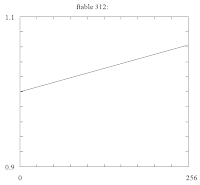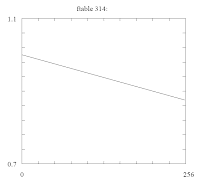Frank Hecker’s blog Swindleeeee!!!!! has a post up tracking the number of Alex Ross’s favorite CD’s he could find on eMusic. Alex is the music critic of the New Yorker Magazine, an author and a blogger I follow.
I looked for the same CD’s on Microsoft Zune.net service, MarketPlace. This is a subscription service for which I pay $45 a quarter to fill my zune with tunes on the go. I can download all I want, if I wanted anything they offered. So far, the non-pop selection is woefully inadequate. Of the 18 disks in Alex Ross’s collection, I found 7 on the Zune service. That’s pretty poor. Frank found 13 on eMusic.
Here’s what I found:
Steve Reich, Music for 18 Musicians, Grand Valley State University New Music Ensemble – Nope. Only the Nonesuch 9/13/05 version. No information available on who performed this or any other CD on the Zune service. Just Album title and small picture, Artist Name, and Track name. Poor.
Strauss, Salome, Teresa Stratas, Karl Böhm, Vienna Philharmonic (DG DVD) Nope. Just a few excerpts by other performers.
Handel Arias, Danielle de Niese and William Christie with Les Arts Florissants (Decca). Nope. Just one by Angelika Kirchschlager.
John Luther Adams, Red Arc/Blue Veil (Cold Blue). Yes.
Mozart, Don Giovanni, René Jacobs conducting (Harmonia Mundi). Nope. Just the Wilhelm Furtwängler version.
Previously:
Beethoven, Symphonies Nos. 3 and 8, Paavo Järvi conducting the Kammerphilharmonie Bremen (BMG). Nope.
John Cage, Complete Short Works for Prepared Piano, Philipp Vandré (Mode). Yes.
Common Sense Composers’ Collective, tic, with the New Millenium Ensemble (Troy). Nope.
Beethoven, Piano Sonatas vol. 3, Paul Lewis (Harmonia Mundi). Yes.
Bach, Goldberg Variations, Simone Dinnerstein (Telarc). Available, but not to subscription users. You have to buy it for 79 cents a song.
Brahms, String Sextets, Nash Ensemble (Onyx). Nope.
Osvaldo Golijov, Oceana, with Dawn Upshaw, Luciana Souza, the Kronos Quartet, and Robert Spano conducting the Atlanta Symphony (DG). Yes, but not all tracks, only 9 of 12. Lame.
Lorraine Hunt Lieberson: Live from Wigmore Hall, 1998; with Roger Vignoles, piano (Wigmore Hall Live). Nope.
Roussel, Symphony No. 3 and Bacchus et Ariane; Stéphane Denève conducting the Royal Scottish National Orchestra (Naxos). Yes.
As Steals the Morn…: Handel Arias and Scenes; Mark Padmore, tenor, with Andrew Manze conducting the English Concert (Harmonia Mundi). Yes.
Gershwin, Piano Concerto in F, Rhapsody in Blue, Cuban Overture; Jon Nakamatsu, piano, with Jeff Tyzik conducting the Rochester Philhamonic (Harmonia Mundi). Yes.
Alexandra Gardner, Luminoso (Innova). Yes.





